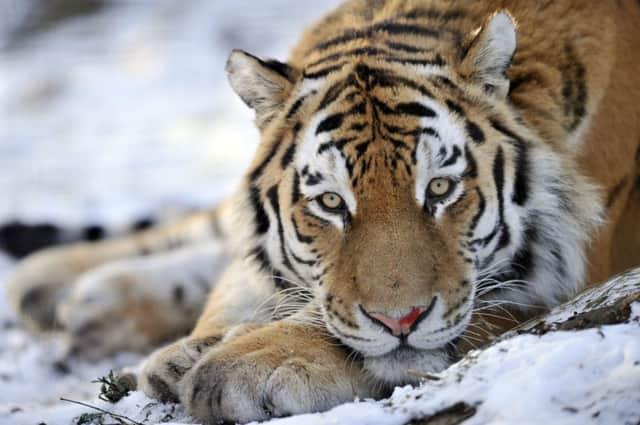Let’s breed habit of saving species


I think the Royal Zoological Society of Scotland is one of the most hopeful places to work in Scotland! It’s not an empty boast because beyond the admittedly superb collection of animals on show at both Highland Wildlife Park (HWP) and Edinburgh Zoo, it is the behind-the-scenes activity in the breeding and conservation of various cat species that fills me with hope that we are capable of making a difference on a global scale to some of the world’s most threatened species.
No doubt we shared a feeling of despondency upon reading the World Wildlife Fund’s recent Living Planet report which stated that thanks to our appalling management of our planet, of the 10,000 vertebrate animal populations measured, their numbers have dropped by more than 50 per cent in the last 40 years. Coupled with the fact that almost half of all cat species in the wild are now threatened, we could realistically be facing a report in 2054 that says, “That’s it, folks, the animals are gone”.
Advertisement
Hide AdAdvertisement
Hide AdReversing this loss is key to our existence as a conservation body and securing a future for these cats is a priority. Often referred to as an apex species, their absence can have a damaging effect on its ecosystem if they are not about to keep the animals they prey on in check.
So, why hope? Well, the global Amur leopard reintroduction project is intended to help what is arguably the rarest cat in the world, with a wild population hovering at a meagre 40 individuals. The project will see captive-bred leopards going back to Russia’s far-east for breeding and subsequent release of the offspring. In a large undeveloped area of HWP, we will soon be building a couple of very large, natural enclosures that will allow Amur leopard cubs to be born and reared with minimal to no exposure to humans. With this hands-off approach, our cubs will be eligible for release, thus accelerating the recovery project of this magnificent species.
Captive breeding in parks such as ours is instrumental when it comes to reintroducing populations back into the wild again or more usually to ensure that there are healthy safety-net populations. We are about to begin construction of a large breeding enclosure for snow leopards which will provide a much needed additional breeding facility for the European breeding programme.
As specialists in the management and breeding of cat species, our expertise is being called upon in the current efforts to save Scotland’s last wild felid, the Scottish wildcat. HWP helps to “process” any suspected wildcats that are brought in from the wild, assessing the genetic value of each cat using a test developed in part by our very own genetics lab, RZSS Wildgenes. Wildcats have hybridised with feral domestic cats over the years and if we wish to secure a genetically strong population for future reintroduction, then we need this information to select and maximise breeding potential which is taking place in our planned off-exhibit wildcat breeding enclosures.
Our Amur tigers have produced cubs and we know that the captive population has genes that are no longer found in the wild population. Wildgenes has been instrumental in clarifying the origins of the European captive Amur tiger population, which has reinforced the value of the zoo tigers.
WildGenes has also been working with United Arab Emirates’ Al-Ain Zoo in clarifying the degree of relatedness between individual Arabian sand cats and the level of genetic diversity within the captive population, to help with their breeding programme. It is also intended to use this advanced genetics technology to monitor the status of the UAE’s wild sand cat population.
I’ll finish with this thought. If we wish to take big cat conservation seriously though, we need to consider the other cats which no longer live in the UK and decide whether we attempt to reintroduce them again.
It’s a sensitive, controversial subject and I have no wish to start the debate here. However, the UK was home to the Northern lynx until around 1000 years ago, possibly as recent as 600 years ago. The lynx’s primary prey is roe deer, a species which is out of control in Scotland and which has a damaging impact upon our efforts to re-establish forests. Lynx have also never been known to attack humans.
Advertisement
Hide AdAdvertisement
Hide AdAs a body which takes its education remit seriously, we believe that awareness is needed to allow people to make informed decisions. We have therefore established a breeding pair of lynx at HWP so that as many people as possible can see and learn about them.
• Chris West is chief executive of the Royal Zoological Society of Scotland.